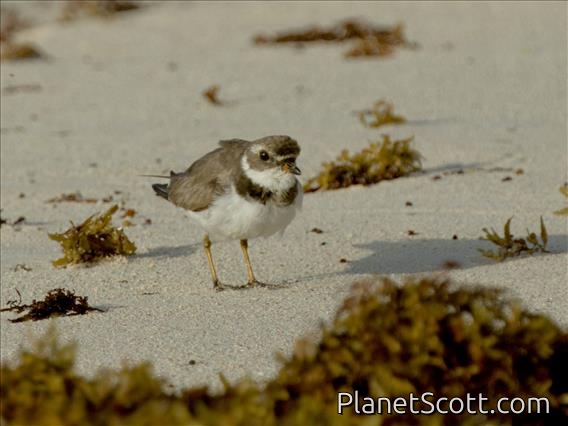Semipalmated Plover (Charadrius semipalmatus)

Semipalmated Plover (Charadrius semipalmatus)
×


Semipalmated Plover (Charadrius semipalmatus)
About Semipalmated Plover (Charadrius semipalmatus)
- Kingdom: Animals
- Phylum: Chordates
- Class: Birds
- Order: Shorebirds and Allies
- Family: Plovers
The semipalmated plover is a small plover. Charadrius is a Late Latin word for a yellowish bird mentioned in the fourth-century Vulgate. It derives from Ancient Greek kharadrios a bird found in ravines and river valleys. The specific semipalmatus is Latin and comes from semi, "half" and palma, "palm". Like the English name, this refers to its only partially webbed feet.
Source: Wikipedia
Lifelists
Trips
Visits
-
2006-04-16
Kern National Wildlife Refuge, United States of America -
2006-12-01
Isla Floreana - Punta Flores, Ecuador -
2006-12-04
Isla Santiago - James Bay, Ecuador -
2006-12-06
Isla Isabella - Puerta Villamil, Ecuador -
2007-04-07
Torrey Pines State Reserve, United States of America -
2007-04-24
Heron's Head Park, United States of America -
2009-02-24
Puerto Jiminez, Costa Rica -
2009-02-25
Corcovado National Park - La Sirena, Costa Rica -
2010-05-27
Kenai Peninsula, United States of America -
2010-05-29
Saint George Island, United States of America -
2011-07-25
Praia do Forte, Brazil -
2012-07-11
McKenzie Slough, United States of America -
2012-07-21
Don Edwards National Wildlife Refuge - Alviso, United States of America -
2012-08-12
Coyote Point County Park--harbor and marsh, United States of America -
2013-04-16
Aransas NWR (CTC 037) (Aransas Co.), United States of America -
2013-04-17
Brazoria NWR (UTC 108), United States of America -
-
2014-07-17
Nome--Safety Sound, United States of America -
2014-07-18
Nome-Kougarok Road, United States of America -
2015-01-01
Candlestick Park, United States of America -
-
-
2016-01-05
Cabo Rojo, United States of America -
-
-
-
-
-
-
-
-
-
-
2024-10-14
Santuario de Fauna y Flora Los Flamencos, Colombia -
-




